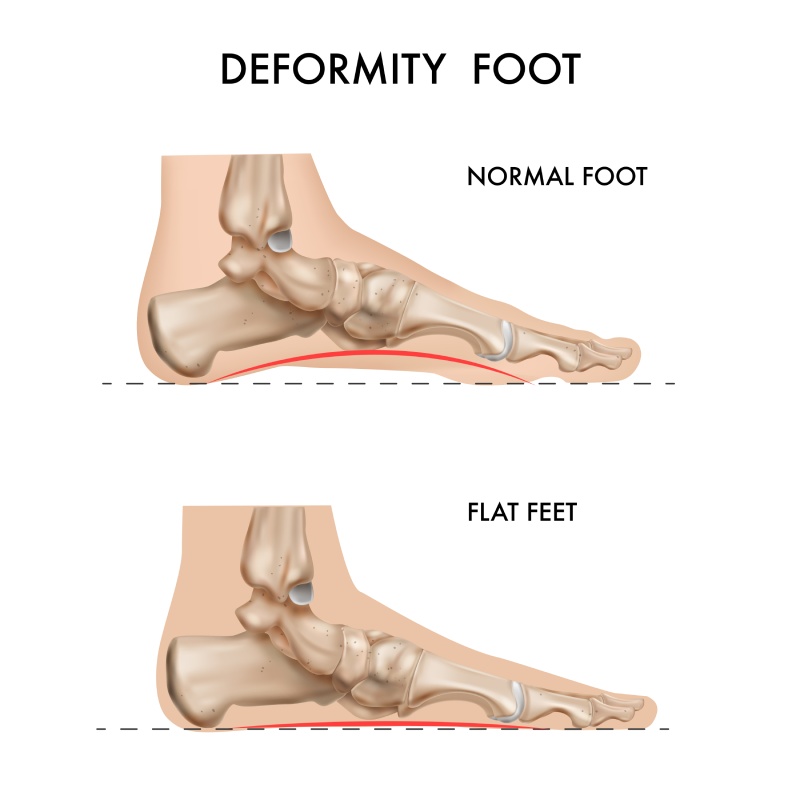Deformity Correction Procedures
Deformity correction is a medical procedure used to fix a bone that is twisted or bent abnormally. Once the bone is straightened, the affected arm, leg, or foot is restored to its normal alignment and function. Orthopedic doctors correct deformities in two ways – either through an acute correction during a single surgical procedure or gradual correction over several weeks or months. The choice of approach depends on the patient’s individual circumstances and will be decided by the doctor.
Acute Deformity Correction Procedure
The surgeon performs an osteotomy, which involves cutting across the bone to create two distinct segments during the surgical process. This type of procedure is known as osteotomy. Your orthopedic doctor straightens the bone. The doctor uses an internal device such as a metal plate or internal nail/rod to maintain the bone’s proper alignment during the healing process. Occasionally, additional soft-tissue procedures may be necessary to allow the muscles and nerves to adjust to the correction. In a subsequent surgery, the internal device may be removed after the bone has fully healed.
The physician might use fixator-assisted plating or fixator-assisted nailing to align the bone in certain cases. These two methods require attaching an external fixator during surgery to maintain the bone fragments in accurate alignment while an internal nail, rod, or plate is placed. After the surgery, the external fixator is taken off, but the internal fixation stays in place.
 Gradual Deformity Correction
Gradual Deformity Correction
An orthopedic doctor applies an external fixator to the bone during a surgical procedure. During the same procedure, the doctor cuts the bone to separate two bones segments. And then performs soft tissues procedure to prepare the nerves and muscles.
Following the surgical procedure, the patient will receive precise guidelines and a timetable on how to modify the external fixator, which will gradually align the bone. This gradual process of gradually pulling apart and aligning the bone segments is referred to as distraction, meaning “to pull apart.” As the two bone segments are gradually pulled apart and straightened, new bone develops in the gap between them, which is known as regenerated bone.
Distraction Phase
In the distraction phase, the orthopedic device is modified on a daily or even multiple times per day basis to gradually pull apart and straighten bone segments at a rate of roughly 1mm (0.04 inches) per day. This causes the body to constantly generate new bone and soft tissues, such as skin, muscles, nerves, and blood vessels. This phase continues until the bone is properly corrected or straightened. The patient will require check-ups with the doctor every 10 to 14 days during the distraction phase and will begin a rigorous physical therapy regimen.
Consolidation Phase
After the distraction phase, the bone regeneration process moves into the consolidation phase. During this phase the newly formed bone gradually becomes harder. Complete hardening and calcification of the regenerated bone indicate that the bone is fully consolidated or healed. Generally, the consolidation phase takes twice as long as the distraction phase. For instance, if it takes one month for distraction to complete, then consolidation will require two months. Therefore, in this case, the external fixator would need to be kept on the patient for a total of three months, including both the distraction and consolidation phases.
Patients can aid in the healing of their bones by refraining from using any nicotine. They should ensure that their diet is rich in protein, and take supplements containing essential vitamins and minerals. Additionally, the doctor may recommend putting some weight on the affected limb during the healing process to promote bone hardening and healing. Once the newly formed bone has fully solidified, the external fixator can be removed in an outpatient surgical procedure, which does not require the patient to stay overnight in the hospital.